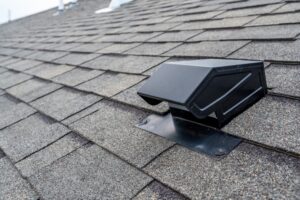Damage from high winds is one of the most common types of roof damage to occur in the Richmond area. It’s one everyone at Reign Roofing understands—we’ve handled repairs to many wind-damaged roofs, including from full-blown hurricanes.
Along with fixing wind roof damage in Cypress, TX, we help many homeowners with their insurance claims for wind damage. We carefully inspect roofs to catalog damage from wind so that homeowners will get the best payment on their claims.
But looking for wind damage starts with you, the homeowner. You have to know when it’s time to call your insurance company and our team, after all. It’s also important to have any wind damage corrected fast, as it can leave your roof vulnerable to leaks and other problems.
So now that the storm is over, let’s go over how to check for wind damage to your roof.
Stay on the ground at first
You’ll begin with a visual inspection of what you can see from the ground. If you can’t easily see parts of the roof to make an inspection or you need a closer look, bring out the ladder and get up where you have a better view. However, please don’t get on the roof itself! The danger of slipping off is too high. When it comes time to get on the roof to inspect damage, that’s a job that our experts will handle.
Look for missing or damaged shingles
The first thing to scan for as you look over your roof is places where shingles have gotten torn off. A shingle is a water-proof asphalt defense for the roof underlayment, and if one is missing, water will be able to seep in. When you notice a missing shingle, look around it to see if the adjacent shingles show damage such as cracks, curling, or tears.
Inspect the flashing
What’s flashing? It’s any of the metal material that’s used on the seams and edges of your roof to seal it. You’ll have flashing around the chimney, skylights, and roof vents. Flashing is more susceptible to wind damage than shingles or other parts of the roof, so noticing if it’s loose or cracked is a good indicator of wind damage elsewhere.
Check for dents on a metal roof
If you have a metal roof rather than a shingle roof, look for dents and dings. These are similar to the marks you’d find from hailstones. Metal roofs have strong resistance to wind damage, but they can dent due to debris the wind blows around. Even small dents can become problems.
Check for general debris
You’ll get an idea of how bad your roof got hit based on how much debris is left around. Branches, leaves, rocks, and other debris can damage your roof. We recommend clearing away as much debris as you can from a ladder without going onto the roof.
Look for leaks
Okay, now it’s time to look at the roof from the other side—from inside the house. If the high winds were part of a rainstorm, you want to check for water leaks on the ceilings and walls. Look for discolored stains spreading on ceiling material. Go into the attic to look for moisture.
Contact Reign Roofing if your roof has sustained wind damage. Redefining the Roof Buying Process!

